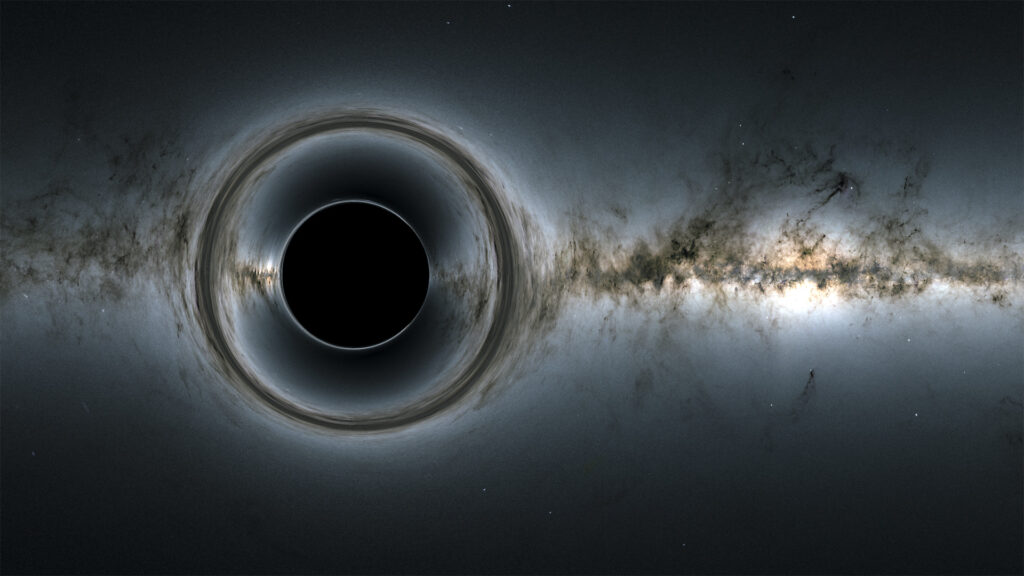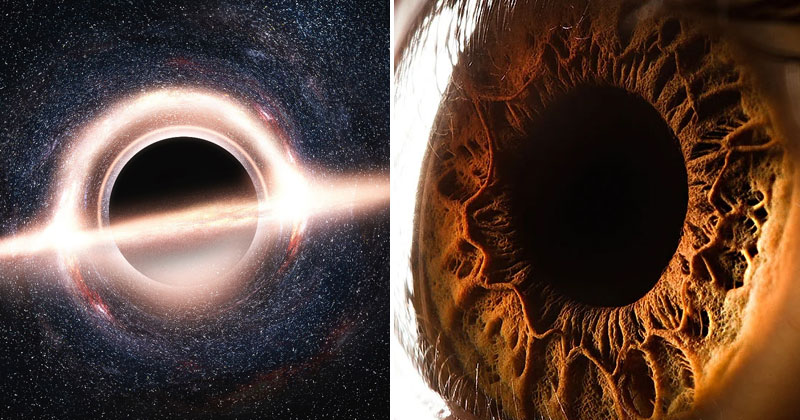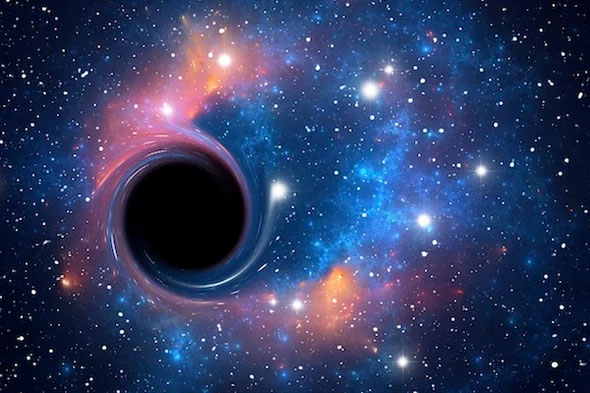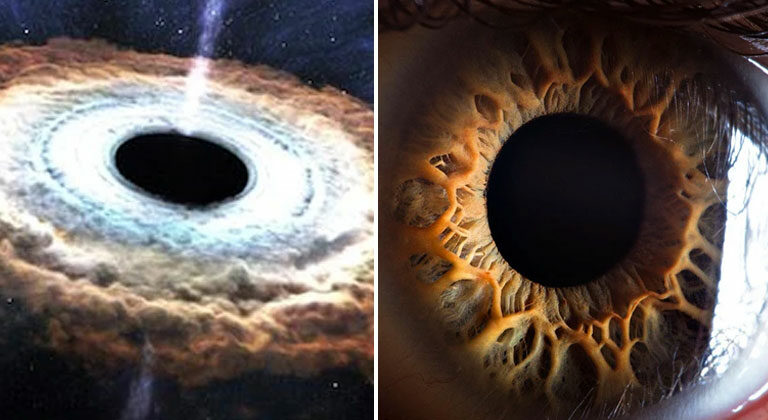The human eye and black holes are two vastly contrasting objects that surprisingly share a common trait: their ability to absorb light. The human eye is a marvel of nature, capturing and decoding light to give us a window into the world around us, while black holes are enigmatic regions of space where not even light can escape. Despite their differences, both the human eye and black holes play important roles in our understanding of the universe and the behavior of light.
The human eye captures light through a sophisticated system. The clear front surface of the eye, the cornea, helps focus the incoming light, which then passes through the pupil, an adjustable opening in the center of the iris that regulates the amount of light entering the eye. The lens further refines the focus, directing the light onto the retina, a layer of light-sensitive cells located at the back of the eye. The retina contains rods and cones, which detect light and dark, color, and fine detail, respectively. When light reaches the retina, it triggers a chain reaction that generates nerve signals, which are sent to the brain and interpreted as images.

Similarly, black holes also absorb light to create their defining characteristic, the event horizon. The event horizon is the point of no return for light, beyond which it is irretrievably trapped by the black hole’s immense gravity. The size of the event horizon can change, growing or shrinking based on the amount of matter that has fallen into the black hole. This material, which is pulled into the black hole, forms an accretion disk, where intense friction and heat cause it to emit intense light.
The human eye and black holes are both guardians of light in their unique ways. While the human eye allows us to see and experience the world, black holes offer a glimpse into the mysteries of the universe. Nevertheless, both the human eye and black holes offer important insights into the nature of light and the workings of the cosmos.
It’s also worth noting that the study of black holes has helped us expand our understanding of the behavior of light and the laws of physics. For instance, the observation of black holes has provided evidence for the existence of gravitational lensing, where light is bent by the intense gravitational pull of a black hole, and for the theory of general relativity, which describes the relationship between matter, energy, and space-time. Through their unique roles in capturing and absorbing light, the human eye and black holes continue to broaden our understanding of the universe and our place within it.



